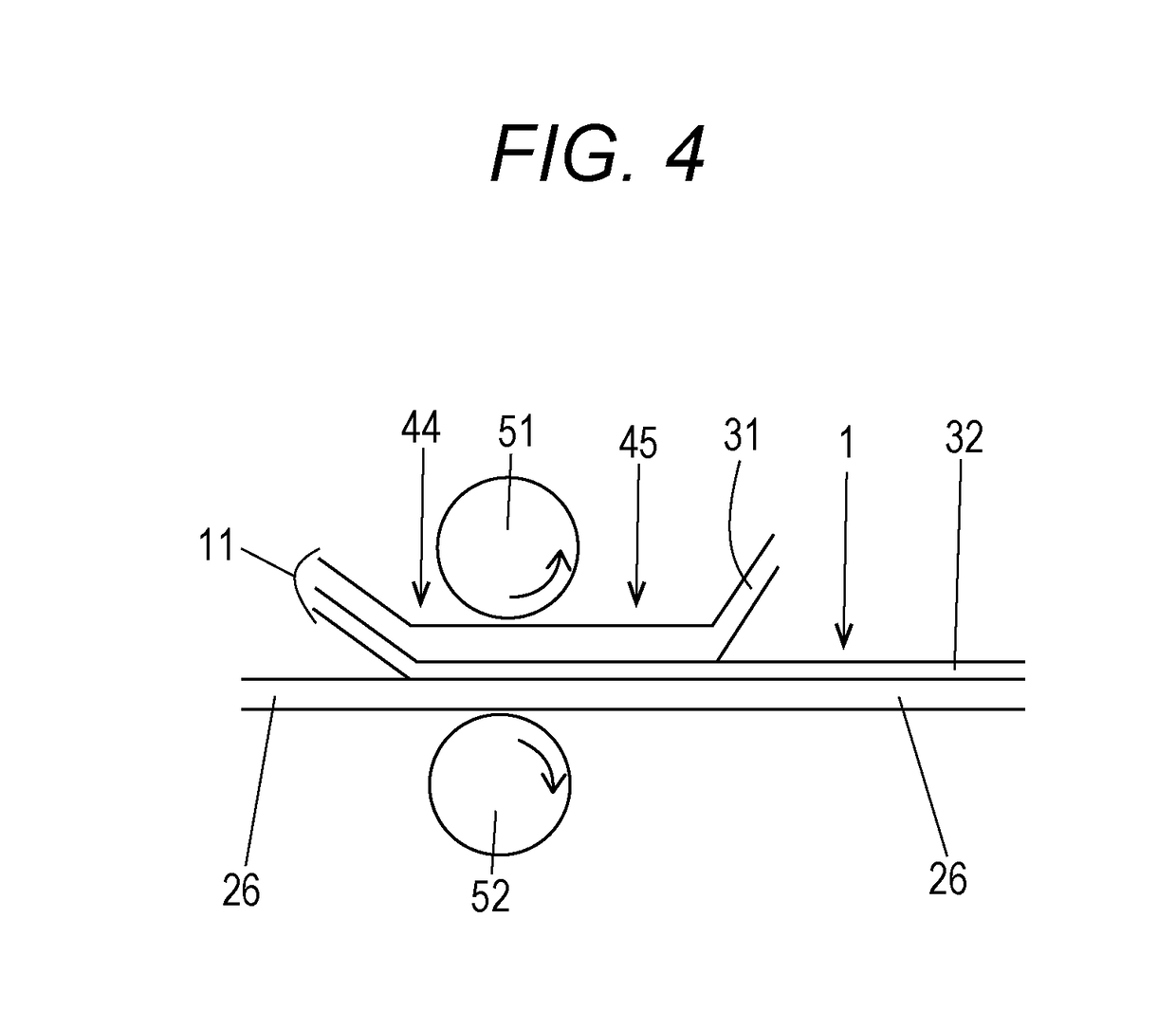Antiviral transfer sheet and method for manufacturing same, and antiviral shrink film and method for manufacturing same
a technology of antiviral shrink film and transfer sheet, which is applied in the field of antiviral transfer sheet, can solve the problems of adversely affecting the transparency of the active energy ray cureable composition layer, the antiviral agent is an expensive material, and the transfer sheet is more expensive, so as to save the antiviral agent, maintain and reduce the degree of adversely affecting the transparency of the functional layer
- Summary
- Abstract
- Description
- Claims
- Application Information
AI Technical Summary
Benefits of technology
Problems solved by technology
Method used
Image
Examples
example 1
[0124]A transfer sheet was fabricated. Transfer was performed by in-mold injection molding. An antiviral molded article was prepared. The antiviral property, total light transmittance, and haze of the antiviral molded article were measured.
[0125]The transfer sheet manufacturing method and the like were as follows.
[0126]Base material sheet: PET film, thickness 50 μm (micrometers) Antiviral agent: Mix powder of 60 parts by weight of TiO2 powder and 40 parts by weight of Cu2O powder
[0127]TiO2 powder (white powder) had a primary particle size of 15 nm. Cu2O powder (brownish-red powder) had a primary particle size of 50 nm.
[0128]Hard coat agent: Urethane acrylate-based ultraviolet ray cure resin
[0129]Molding resin: Acrylic resin
[0130]Molded article size: 50 mm×50 mm×1 mm
[0131]Molten resin temperature: 240° C. to 260° C.
[0132]Onto the base material sheet, a suspension including antiviral agent, methyl ethyl ketone, and a small amount of hard coat agent was applied by an amount such that t...
example 2
[0144]Using the antiviral molded articles prepared in Example 1, the antibacterial property of the antiviral molded article was measured. The antiviral molded articles used for measurement included sample number 1 and sample number 9. In the paragraphs describing Example 2, the term “antibacterial property” literally means antibacterial property. The term “antibacterial property” does not mean antiviral property.
[0145]The antibacterial property measurement was performed in accordance with JIS-R-1756 (method for testing antiviral property of visible light responsive photocatalysts). As a light condition, illuminance was set to 1000 lx by cutting ultraviolet rays of 380 nm or below included in light of a white fluorescent lamp by means of an N169 filter.
[0146]The test was conducted by the following method. First, 50 μL (microliters) of the sample was irradiated with light for 24 hours while a bacterial liquid of Staphylococcus aureus was added dropwise thereto. From the sample, Staphy...
example 3
[0149]The antiviral shrink film 1 was fabricated by fabricating the transfer sheet 11, analyzing the transfer condition, and performing transfer onto the shrink base material. The shrink-processability of the film was evaluated.
[0150]The manufacturing method and the like of the transfer sheet were as follows.
[0151]Base material sheet: PET film, thickness 50 μm
[0152]Antiviral agent: Mixed powder of 60 parts by weight of TiO2 powder and 40 parts by weight of Cu2O powder
[0153]The TiO2 powder (white powder) had a primary particle size of 15 nm. The Cu2O powder (brownish-red powder) had a primary particle size of 50 nm.
[0154]The shrink base material was a dual-axis stretched polystyrene sheet having a thickness of 60 μm, and exhibited, upon heating at 100° C. for 10 seconds, a thermal shrinkage in the MD direction of 14% and a thermal shrinkage in the TD direction of 75%. The thermal shrinkage was determined according to the following expression.
Thermal shrinkage (%)=100×(pre-heating len...
PUM
| Property | Measurement | Unit |
|---|---|---|
| pressure | aaaaa | aaaaa |
| size | aaaaa | aaaaa |
| total light transmittance | aaaaa | aaaaa |
Abstract
Description
Claims
Application Information
 Login to View More
Login to View More - R&D
- Intellectual Property
- Life Sciences
- Materials
- Tech Scout
- Unparalleled Data Quality
- Higher Quality Content
- 60% Fewer Hallucinations
Browse by: Latest US Patents, China's latest patents, Technical Efficacy Thesaurus, Application Domain, Technology Topic, Popular Technical Reports.
© 2025 PatSnap. All rights reserved.Legal|Privacy policy|Modern Slavery Act Transparency Statement|Sitemap|About US| Contact US: help@patsnap.com



